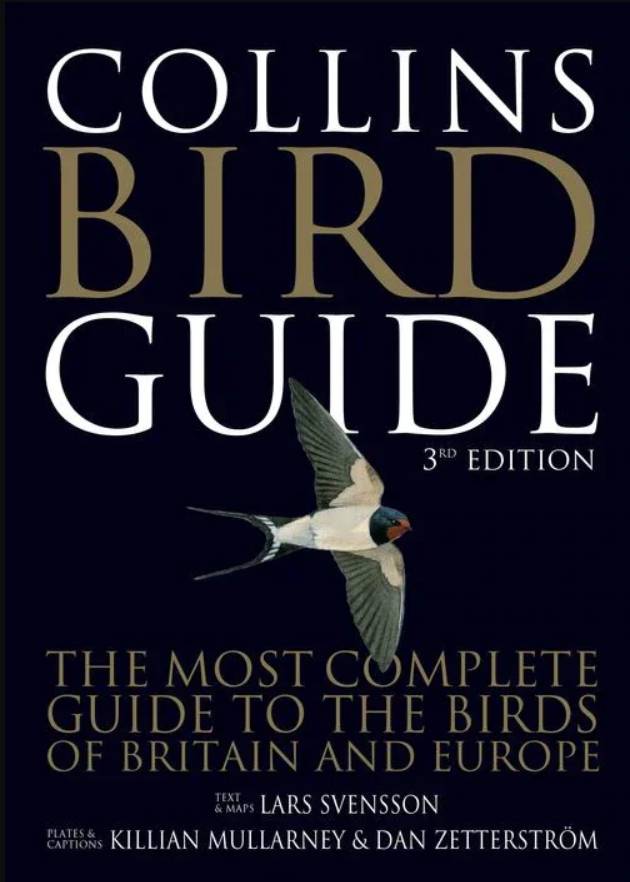Collins Bird Guide (third edition)
- Collins Bird Guide third edition by Lars Svensson, Killian Mullarney and Dan Zetterström.
- HarperCollins, 2022. 448 pages.
- ISBN: 9780008547462.
- Bookshop from £24.99 (hardback) or £14 (paperback).
Over the past couple of decades, the Collins Bird Guide has become something of an institution, both in the birding world and more widely – it's hard to argue with the seven-figure number of copies sold. While a field guide covering European birds is always going to sell with such a high birder density across the continent, its ability to reach beyond this market and present as a top-quality, accessible bird book is full credit to both the authors and the publishers. It was a resounding success in its first two incarnations and the indications are that the third edition – initially published as a hardback version in November 2022, but now also available in paperback – is set to continue this trend.
With its greater pagination and added illustrations, the new version is bigger and better than ever. But what exactly has changed, and has it made sufficient strides during the 12-year wait for an update to be published?
The space afforded by the extra 32 pages means that several groups of birds given greater attention. At least 50 plates are either entirely new or have been repainted, completely or partly, while many texts have been updated to offer more detailed descriptions, reflecting updates or advances in our understanding of identification, range changes and the like.
The new illustrations are, as you'd expect given the calibre of the authors, superb. From the perspective of the British birder, updates to some of the terns, swifts, Old World flycatchers and finches are among the most relevant. Among my favourites were the updated harriers and redstarts, while the distinguishing of Hornemann's Arctic Redpoll is also welcome.
Taxonomy has come a long way since the second edition was published in 2010, with many splits (and some lumps) adopted in the intervening 12 years. Lars Svensson has said that he prefers a cautious approach when it comes to recognising taxonomic changes (see Birdwatch 365: 30-33) and this is evident within. Although open to debate in many cases, I was personally a little surprised to see the black-eared wheatears retained as a single species, especially given that close attention had been paid to revising the illustrations for these two taxa. However, many other recent splits have been included, such as West African Crested and Royal Terns – I particularly appreciated the bill comparison of these two similar species.
The inclusion of Pacific Diver in the main species accounts – where it is now afforded more space for both artwork and text, and is presented alongside Black-throated Diver – is a good example of where the third edition has made welcome progress with regards to the layout. The same applies to another 'contemporary' vagrant, Elegant Tern, which too is elevated to the main accounts and afforded coverage of a range of plumages. Similar developments in the understanding of the status of the region's birds are also reflected – for example, the discovery of breeding Saunders's Tern in Egypt in 2012 sees this species now included in the third edition.
Plenty of work has gone into updating the text for many species, although I did notice some examples where entries hadn’t received as much attention as they should have. For example, any newbie birder picking up the third edition and reading the Ruddy Duck account would be led to believe that this species is still widespread in Britain. The range map suggests Great Spotted Woodpecker is absent from Ireland when it is now widespread there, with this error reinforced in the Green Woodpecker text: "As all woodpeckers, absent Ireland". Furthermore, Ross's Goose is still included within the Introduced and Escapes section at the rear, when this species is included on Category A of numerous European countries and widely considered to be occurring as a wild vagrant. Strangely, Azores Bullfinch is still missing altogether.
These gripes aside, there can be no doubt that the third edition of the Collins Bird Guide represents another significant step forward in terms of its coverage of the region's birds. It remains head and shoulders above the crowd when it comes to field guides and deserves its status as an essential for birders. That said, I am already looking forward to the fourth edition, in which I anticipate some of the third incarnation's shortcomings will be addressed. Hopefully it isn't another 12 years away!



